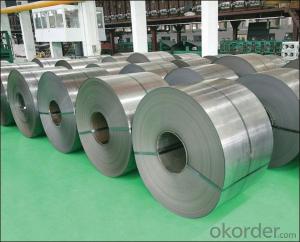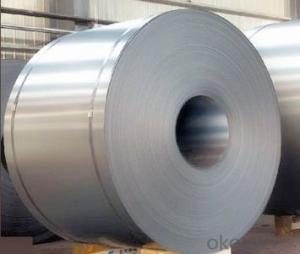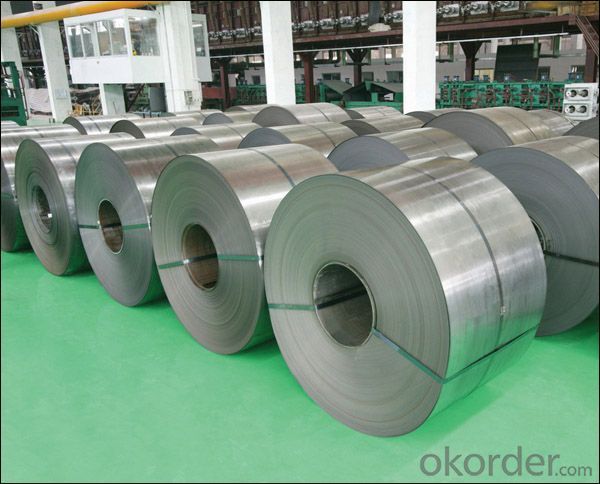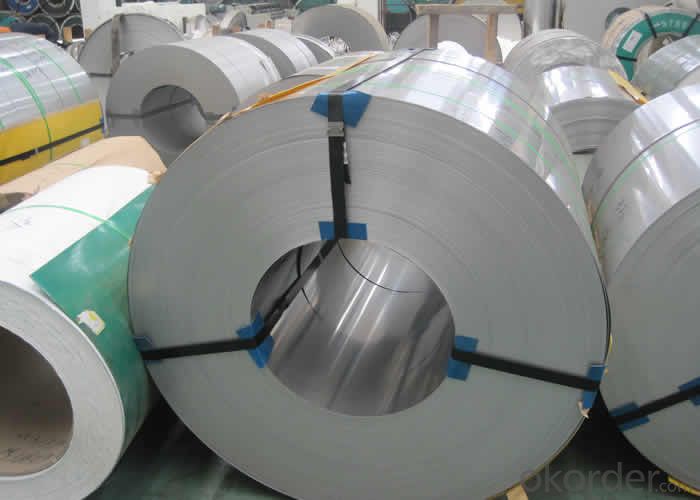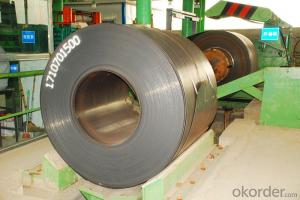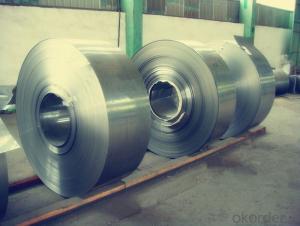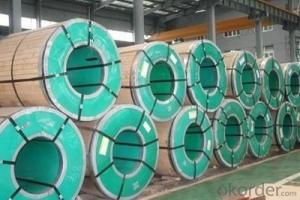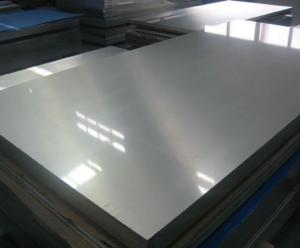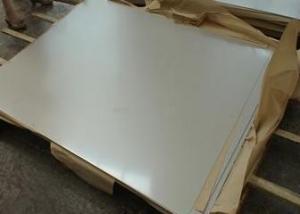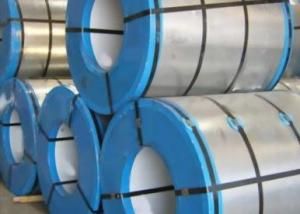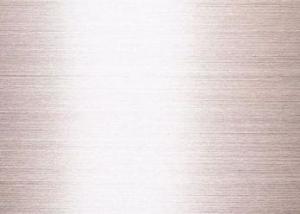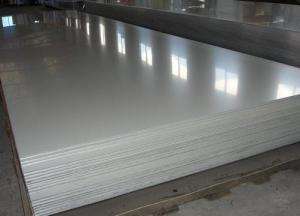Hot Rolled Stainless Steel Coil 201 No.1 Finish Narrow Strip
OKorder Service Pledge
OKorder Financial Service
You Might Also Like
Hot Rolled Stainless Steel Coil 201 Narrow Strip No.1 Finish
Grade: | 200 Series | Standard: | JIS,AISI,ASTM,GB,DIN | Thickness: | 2.5/3.0/4.0mm |
Width: | 485/510/550/610/1010/1240mm | Place of Origin: | Shanghai China (Mainland) | Brand Name: | CNBM |
Model Number: | 201 | Technique: | Hot Rolled | Application: | Industrial tubes/kitchen/bath |
Certification: | ISO | THK: | 2.5/3.0/4.0mm | Face: | No.1 |
Usage: | tubes/kitchen/bath | Origin: | CHINA | ||
Packaging Detail: For customer's requirement
Delivery Detail:10-30days
201 Hot Rolled Stainless Steel Coil Specifications
THK:2.3/2.5/3.0/4.0mm
Width:485/510/550/610/1010/1240mm
Face:No.1
201 Hot rolled stainless steel Coil Application
Stainless steel is a production which not easy rust,acid resistance and corrosion resistance,so it is widely
used in light industry,heavy industry,daily necessities and the decoration industry.
201 hot rolled stainless steel coil, use to produce cold rolled stainless steel coil and stainless steel tube, pipe.
201 Hot Stainless Steel Coil Chemical Composition(WT%)
(C):≤0.15, (Si):≤0.75, (Mn):5.5~7.50, (Cr):16.0~18.0, (N):≤0.25, (Ni):3.50~5.50, (P):≤0.060, (S):≤0.030
201 Hot Rolled Stainless Steel Coil
Strength Of Extension:100,000 To 180,000 Psi;
Yield Strength:50,000 To 150,000 Psi
Elongation :55 To 60%;
Modulus Of Elasticity:29,000,000 Psi;
Density :.280lbs/Cubic Inch(7.93g/Cm3)
- Q: Can stainless steel strips be used in water treatment applications?
- Yes, stainless steel strips can be used in water treatment applications. Stainless steel is highly resistant to corrosion and can withstand exposure to water, making it an ideal material for use in water treatment processes where the strips may come into contact with water or other liquids. Additionally, stainless steel has hygienic properties, is easy to clean, and has excellent longevity and durability, making it a suitable choice for water treatment applications.
- Q: Are stainless steel strips suitable for brewery fermentation vessels?
- Yes, stainless steel strips are suitable for brewery fermentation vessels. Stainless steel is commonly used in the brewing industry due to its excellent corrosion resistance, durability, and ease of cleaning. It is resistant to the acids and chemicals present in beer and can withstand high temperatures during the fermentation process. Stainless steel strips are often used to construct the inner walls of fermentation vessels as they provide a smooth and non-reactive surface for the yeast to ferment the beer. Additionally, stainless steel is a hygienic material that does not impart any flavors or odors to the beer, ensuring the purity and quality of the final product. Overall, stainless steel strips are a preferred choice for brewery fermentation vessels due to their suitability for the brewing process and their ability to maintain the integrity of the beer.
- Q: Can 111 stainless steel strips be stamped or embossed for decorative purposes?
- Certainly! It is possible to stamp or emboss 111 stainless steel strips for decorative intentions. Stainless steel is an adaptable substance that can undergo different manufacturing procedures, including stamping and embossing. The process of stamping entails pressing or molding the stainless steel strip with a die, whereas embossing generates elevated or sunken designs on the surface. Both methods can be employed to incorporate decorative patterns, logos, or textures onto the stainless steel strips, rendering them appropriate for decorative purposes in various industries like interior design, architecture, automotive, or consumer goods.
- Q: What is the electrical resistivity of stainless steel strips?
- The electrical resistivity of stainless steel strips can vary depending on the specific grade and alloy composition. However, generally speaking, stainless steel is known to have a relatively high resistivity compared to other metals. The resistivity of stainless steel strips typically ranges from 70 to 72 micro-ohm centimeters (µΩ·cm) at room temperature. This higher resistivity is due to the presence of chromium and other alloying elements in stainless steel, which contribute to its corrosion resistance and mechanical properties. It is worth noting that resistivity can also be affected by factors such as temperature, impurities, and processing conditions, so precise values may vary in different scenarios.
- Q: Can stainless steel strips be used in the food processing equipment industry?
- Stainless steel strips find extensive use in the food processing equipment industry. This is because stainless steel possesses numerous advantageous qualities, rendering it a favored choice in this sector. Its resistance to corrosion is of utmost importance in an environment where food and liquids are consistently present. Moreover, stainless steel is both hygienic and easy to clean, making it ideal for equipment that comes into contact with food. Furthermore, stainless steel's exceptional strength and durability enable the equipment to endure the rigorous demands of the food processing industry. Consequently, stainless steel strips are widely employed in the production of food processing equipment, including conveyors, mixers, slicing machines, and food storage containers.
- Q: What are the different thicknesses available for stainless steel strips?
- Stainless steel strips are available in various thicknesses to suit different applications and requirements. Typically, the thickness options for stainless steel strips range from 0.0015 inches (0.0381 mm) to 0.125 inches (3.175 mm) or even thicker, depending on the specific project needs. These thicknesses are commonly measured in gauge, with 22 gauge (0.030 inches) and 16 gauge (0.0625 inches) being the most prevalent. Nonetheless, it should be noted that stainless steel strips can be tailored to meet specific thickness requirements if necessary. The choice of thickness will be influenced by factors such as the intended usage of the strips, the desired level of durability and strength, and any applicable industry standards or regulations that must be adhered to.
- Q: How do stainless steel strips compare to other metals in terms of cost?
- Stainless steel strips are generally more expensive compared to other metals due to their unique properties and superior corrosion resistance. While the initial cost of stainless steel strips may be higher, they offer long-term cost savings as they require minimal maintenance and have excellent durability. Other metals such as carbon steel or aluminum may have lower upfront costs, but they are more prone to corrosion and wear, which can lead to additional expenses for repairs or replacements. Additionally, stainless steel strips have a high scrap value, making them a more economical choice in terms of recycling and sustainability. Overall, while stainless steel strips may be costlier initially, their long-term benefits and advantages make them a worthwhile investment.
- Q: Do stainless steel strips require any special handling or storage?
- Yes, stainless steel strips do require special handling and storage to maintain their quality and prevent damage. Here are some key considerations: 1. Handling: Stainless steel strips should be handled with care to avoid scratches, dents, or other forms of physical damage. It is recommended to use gloves and protective equipment to prevent any contamination from oils, dirt, or fingerprints. 2. Storage: Stainless steel strips should be stored in a clean, dry, and well-ventilated area to prevent corrosion. They should be kept away from moisture, chemicals, and any other substances that could cause damage. Ideally, the storage location should have a controlled temperature and humidity level. 3. Protection: To ensure the longevity of stainless steel strips, they should be protected from contact with other metals or abrasive materials. Storing them separately or using appropriate packaging, such as plastic or paper interleaved between the strips, can help prevent scratches or other damages. 4. Handling equipment: When moving or transporting stainless steel strips, it is advisable to use equipment specifically designed for handling metal products. This can include lifting devices, slings, or clamps that ensure proper support and avoid any bending or deformation of the strips. 5. Regular inspection: Regularly inspecting stainless steel strips for any signs of damage, corrosion, or deterioration is essential. Any issues should be addressed promptly to prevent further degradation and maintain the quality of the strips. By following these guidelines, stainless steel strips can be stored and handled properly, ensuring their integrity and allowing for their successful application in various industries.
- Q: Are stainless steel strips resistant to crevice corrosion?
- Yes, stainless steel strips are generally resistant to crevice corrosion. Stainless steel is known for its high corrosion resistance, and this includes resistance to crevice corrosion. This type of corrosion occurs in confined spaces or crevices where oxygen levels are low, leading to localized corrosion. However, stainless steel's composition, particularly the presence of chromium, ensures that a protective oxide layer forms on the surface, preventing the initiation and propagation of crevice corrosion. Nonetheless, it is important to note that the resistance to crevice corrosion may vary depending on the specific grade of stainless steel used and the conditions in which it is exposed.
- Q: Can 111 stainless steel strips be used in cryogenic applications?
- Yes, 111 stainless steel strips can be used in cryogenic applications.
Send your message to us
Hot Rolled Stainless Steel Coil 201 No.1 Finish Narrow Strip
OKorder Service Pledge
OKorder Financial Service
Similar products
Hot products
Hot Searches
Related keywords
